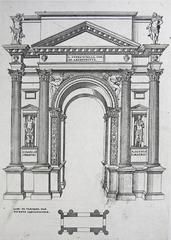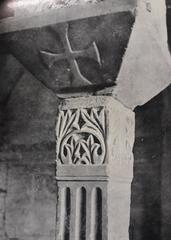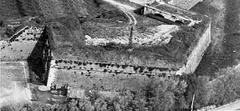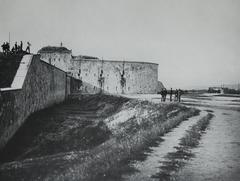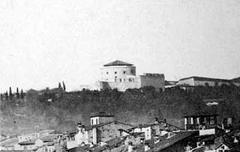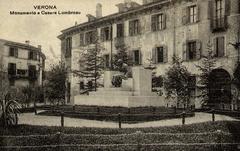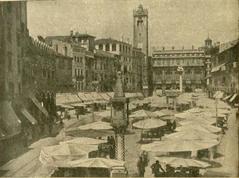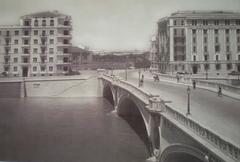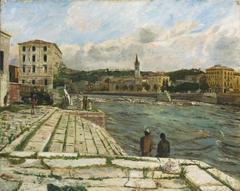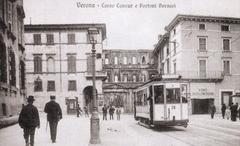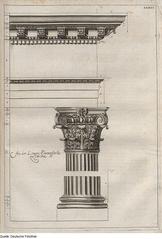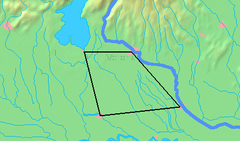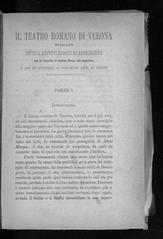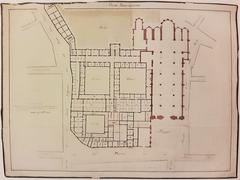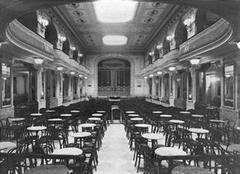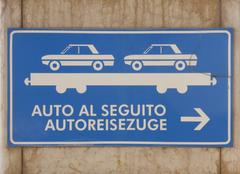Comprehensive Guide to Ponte Pietra in Verona, Italy
Date: 17/07/2024
Introduction
Ponte Pietra, meaning ‘Stone Bridge’ in Italian, stands as one of Verona’s most iconic and historically rich landmarks. This ancient Roman bridge is not only a superb example of engineering and architectural prowess but also a symbol of Verona’s resilience and cultural heritage. Constructed originally in the 1st century BC during the reign of Augustus, Ponte Pietra has withstood the test of time, surviving numerous floods, wars, and reconstructions. Over the centuries, it has served as a critical link connecting different parts of the city, facilitating trade, communication, and military movements (Verona Tourism Website).
The bridge’s historical journey from its Roman origins, through the medieval and Renaissance periods, to its modern-day preservation, offers a fascinating glimpse into Verona’s past. Each era has left its mark on Ponte Pietra, from the use of marble and stone materials to its strategic military role and architectural evolution. Today, Ponte Pietra is free to visit and open 24/7, making it an accessible destination for tourists and history enthusiasts alike. Whether you are drawn by its historical significance, architectural beauty, or the panoramic views it offers, Ponte Pietra is a must-see attraction in Verona.
Table of Contents
- Introduction
- Historical Background and Significance
- Visitor Information
- Special Features
- FAQ
- Conclusion
- References
Historical Background and Significance
Roman Origins and Early Construction
The origins of Ponte Pietra can be traced back to the 1st century BC during the reign of Augustus, the first Roman emperor. Constructed around 100 BC, it served as a vital link connecting the Roman city, then known as Verona Augusta, with the eastern bank of the Adige River. This strategic location facilitated trade, communication, and military movement, solidifying Verona’s importance within the Roman Empire (Verona Tourism Website).
Initially named Pons Marmoreus, meaning “Marble Bridge” in Latin, the bridge was built primarily from white and red Veronese marble. This early structure, however, faced the relentless force of the Adige River, known for its unpredictable currents and occasional flooding.
Medieval Period and Reconstruction
Throughout the Middle Ages, Ponte Pietra underwent several reconstructions and modifications. A major collapse occurred in 1007, followed by another devastating flood in 1232. Each time, the Veronese people rebuilt their beloved bridge, showcasing their resilience and determination.
During the reconstruction efforts in the 13th century, the bridge acquired its present name, Ponte Pietra. This change reflected the shift from marble to stone as the primary building material, ensuring the bridge’s longevity and resilience against the river’s powerful currents.
Strategic Importance and Military Role
Ponte Pietra’s strategic location on the Adige River made it a crucial point of control throughout Verona’s history. During the Middle Ages, it served as a fortified gateway to the city, playing a vital role in Verona’s defense system. The bridge’s arches could be closed off, and its towers served as lookout points and defensive positions, protecting the city from invaders.
Under the Scaligeri rule in the 13th and 14th centuries, Ponte Pietra was incorporated into the city’s fortified walls. The Scaligers added a fortified tower on the eastern bank, known as the Tower of San Marco, which served as a crucial element in Verona’s defensive network.
Renaissance Period and Architectural Evolution
The Renaissance brought about a renewed appreciation for classical art and architecture, influencing Ponte Pietra’s appearance. While the bridge retained its medieval structure, Renaissance architects added decorative elements such as archways and balustrades.
During this period, Ponte Pietra continued to serve as a vital artery for the flourishing city. It witnessed the passage of merchants, artists, and scholars, contributing to Verona’s cultural and economic growth. The bridge’s presence in numerous paintings and literary works from the Renaissance era highlights its iconic status.
Modern Era and Preservation Efforts
The 20th century brought new challenges to Ponte Pietra’s preservation. During World War II, as German forces retreated from Italy, the bridge was mined and partially destroyed in 1945. However, the Veronese people meticulously rebuilt the bridge using original materials recovered from the riverbed.
Today, Ponte Pietra stands as a symbol of Verona’s resilience and rich history. It has witnessed the rise and fall of empires, the passage of time, and the indomitable spirit of its people.
Significance and Symbolism
Ponte Pietra is more than just a bridge; it represents the enduring spirit of Verona. Its survival through centuries of floods, wars, and reconstructions speaks volumes about the city’s determination and the bridge’s importance to its people.
As a symbol of connection, Ponte Pietra links Verona’s Roman past with its vibrant present. Walking across its ancient stones, visitors can almost hear the echoes of Roman legionaries, medieval knights, and Renaissance artists.
Visitor Information
Ticket Prices and Opening Hours
Visiting Ponte Pietra is free of charge, making it an accessible attraction for all. The bridge is open to visitors year-round, 24 hours a day.
Travel Tips
- Best Time to Visit: Early morning or late afternoon to avoid crowds and capture the best photos.
- How to Get There: Ponte Pietra is easily accessible by foot from Verona’s city center. Public transportation options include buses and taxis.
Nearby Attractions
- Verona Roman Theatre: Located near Ponte Pietra, this ancient theatre offers a glimpse into Verona’s Roman past (Veronissima).
- Castel San Pietro: A short walk from the bridge, this castle provides panoramic views of the city (Veronissima).
Accessibility
Ponte Pietra is partially accessible to visitors with mobility issues. The bridge’s uneven surfaces may pose challenges, so assistance is recommended.
Special Features
Guided Tours
Several tour companies offer guided tours of Ponte Pietra, providing historical insights and fascinating anecdotes about the bridge and Verona.
Photographic Spots
Ponte Pietra offers numerous photographic opportunities. The best spots include the middle of the bridge, capturing the Adige River, and the views from Castel San Pietro.
Special Events
Throughout the year, Ponte Pietra hosts various cultural events and festivals. Check the Verona tourism website for the latest information.
FAQ
Q: What are the visiting hours for Ponte Pietra?
A: Ponte Pietra is open to visitors 24 hours a day, year-round.
Q: How much are the tickets to visit Ponte Pietra?
A: Visiting Ponte Pietra is free of charge.
Q: What are some nearby attractions to Ponte Pietra?
A: Nearby attractions include Verona Arena, Piazza delle Erbe, and Juliet’s House.
Q: Are guided tours available for Ponte Pietra?
A: Yes, guided tours are available and provide deeper insights into the history and architecture of the bridge.
Q: Is Ponte Pietra accessible for visitors with mobility issues?
A: While the bridge is accessible, the uneven surfaces and steps may pose challenges for some visitors.
Conclusion
Ponte Pietra stands as a testament to the enduring legacy and resilience of Verona. From its origins in the Roman era to its medieval modifications and Renaissance embellishments, the bridge encapsulates the city’s rich history and architectural evolution. Despite the challenges it has faced, including devastating floods and wartime destruction, Ponte Pietra has been meticulously preserved, symbolizing the indomitable spirit of the Veronese people.
Visiting Ponte Pietra offers a unique opportunity to walk through centuries of history, experiencing the echoes of Roman legionaries, medieval knights, and Renaissance artists. Its strategic location, architectural marvels, and the stunning views it provides make it more than just a bridge; it is a living monument to Verona’s past and present. As you explore this iconic landmark, take the time to appreciate not just its beauty but also the stories and significance it holds. Plan your visit to Ponte Pietra and immerse yourself in the timeless charm of Verona (Verona Tourism Website).
References
- Verona Tourism Website. (n.d.). Discover Verona: Art and Culture. Retrieved from https://www.turismoverona.eu/en/discover-verona/art-and-culture/the-roman-theatre-and-ponte-pietra
- ATV Verona. (n.d.). Public Transportation. Retrieved from https://www.atv.verona.it/en
- Veronissima. (n.d.). Roman Theatre of Verona. Retrieved from https://www.veronissima.com/en/guide/verona/roman-theatre-of-verona.html
- Veronissima. (n.d.). Castel San Pietro. Retrieved from https://www.veronissima.com/en/guide/verona/castel-san-pietro.html
- Veronissima. (n.d.). Verona Cathedral. Retrieved from https://www.veronissima.com/en/guide/verona/verona-cathedral.html
- Veronissima. (n.d.). Piazza delle Erbe. Retrieved from https://www.veronissima.com/en/guide/verona/piazza-delle-erbe.html
- Veronissima. (n.d.). House of Juliet. Retrieved from https://www.veronissima.com/en/guide/verona/house-of-juliet.html

